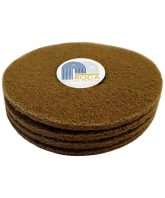Deburring plastics
Deburring plastic components, whether in manufacturing or other industries, presents a set of unique challenges. These challenges stem from the properties of plastic materials and the diverse range of plastic manufacturing processes.
Below are some of the key challenges faced in deburring plastic:
1. Material Sensitivity
- Softness and Deformation: Plastics are often softer and more flexible than metals. Aggressive deburring methods can deform or damage the plastic part, leading to dimensional inaccuracies or aesthetic issues.
- Heat Sensitivity: Some plastics are sensitive to heat, and the friction generated during deburring can cause melting, warping, or surface imperfections.
2. Variety of Plastic Materials
- Different Behaviours: Plastics vary widely in terms of hardness, flexibility, and brittleness. A method that works for one type of plastic (e.g., ABS) may not work well for another (e.g., polycarbonate), requiring adjustments or different deburring techniques.
- Specialty Plastics: Some plastics, such as those reinforced with fibers or containing additives, may have unique characteristics that make them more challenging to deburr without damaging the material.
3. Complex Part Geometries
- Intricate Shapes: Plastic parts often have complex shapes, including undercuts, internal features, and tight tolerances. Reaching all areas that need deburring can be difficult, requiring specialized tools or automated systems.
- Delicate Features: Small or delicate features can be easily damaged during deburring, especially if manual techniques are used. Precision is critical to avoid harming the part.
4. Deburring Methods
- Manual Deburring: While it allows for control and precision, manual deburring is labour-intensive and prone to variability in quality. It can be difficult to achieve consistent results across large production runs.
- Mechanical Methods: Techniques like tumbling, vibratory finishing, or using rotary tools can be effective but might not always reach all areas of the part, or they might damage more delicate plastic parts.
5. Surface Finish Requirements
- Aesthetics: Plastic parts often require a smooth, visually appealing finish, especially for consumer products. Inconsistent or overly aggressive deburring can leave marks, scratches, or other surface defects that detract from the appearance of the part.
- Functional Surface Integrity: Deburring should not compromise the functional surface properties of plastic parts, such as resistance to chemicals, wear, or UV exposure.
6. Cost and Efficiency
- Balancing Costs: Achieving a balance between effective deburring and cost-efficiency is challenging. Some deburring methods can be expensive or time-consuming, particularly for high-volume production.
- Automation Limitations: While automation can improve consistency and reduce labour costs, setting up automated deburring systems for complex plastic parts can be expensive and requires precise tuning to avoid damaging the parts.
7. Environmental and Safety Concerns
- Waste Management: Deburring can generate plastic waste (e.g., plastic shavings or dust), which needs to be managed and disposed of properly, especially if the plastic contains hazardous additives.
- Health and Safety: Manual deburring or methods that produce dust can pose health risks to workers, necessitating proper ventilation and protective equipment.
8. Dimensional Accuracy
- Tolerance Control: Maintaining tight tolerances during the deburring process is crucial, as excessive material removal can affect the part’s fit and function. This is particularly challenging for parts with fine details or those requiring precision in their final dimensions.
Different types of plastic burr
Plastic burrs come in various types based on their formation during manufacturing:
- Flash Burrs: Occur where plastic molds meet, creating thin, unwanted edges along parting lines.
- Poisson Burrs: Form during cutting or drilling, resulting in small, raised material around the edges.
- Rollover Burrs: Appear when plastic is bent or sheared, leading to rounded edges with excess material.
- Tear Burrs: Created by tearing or breaking plastic during machining, leaving jagged, irregular edges.
- Feather Burrs: Thin, wispy burrs that can be delicate and hard to remove, often requiring precision.
How to deburr plastic
The goal is to achieve a clean, smooth finish without damaging the part. Below are some methods for deburring plastic components, along with considerations for choosing the right approach.
1. Manual
- Tools: Common manual tools include precision knives, scrapers, sandpaper, or files specifically designed for plastic.
- Technique: Carefully trim or scrape away burrs using the chosen tool. Sandpaper or files can be used to smooth out rough edges.
- Advantages: Provides high control and precision, especially for delicate parts or complex geometries.
- Considerations: Labour-intensive, time-consuming, and may lead to inconsistent results if not done carefully.
2. Mechanical
- Rotary Tools: Small rotary tools (e.g., Dremel) with specialized attachments can be used to remove burrs from plastic parts.
- Technique: Use the tool at low speeds to avoid generating heat, which could melt or warp the plastic.
- Considerations: Effective for larger parts, but care must be taken to avoid over-deburring or damaging the part.
- Sanding Wheels or Belts: For larger or flat surfaces, sanding wheels or belts can be used to remove burrs and smooth out edges.
- Technique: Light pressure and gradual passes ensure that material is removed evenly.
- Considerations: Suitable for larger parts, but not ideal for small, intricate components.
3. Vibratory Finishing (Tumbling)
- Process: Parts are placed in a vibratory tumbler with abrasive media (e.g., ceramic, plastic, or resin media) that gently grinds away the burrs.
- Advantages: Effective for deburring multiple parts at once, making it ideal for high-volume production.
- Considerations: May not reach all areas of complex parts, and careful media selection is necessary to avoid damaging the plastic.
4. Ultrasonic
- Process: Parts are submerged in a liquid and subjected to high-frequency ultrasonic waves, which cause cavitation that removes burrs.
- Advantages: Non-abrasive and gentle, suitable for delicate parts and those with complex geometries.
- Considerations: Requires specialized equipment and may not be effective for very tough or large burrs.
5. Laser
- Process: A laser beam is used to precisely remove burrs from the surface of plastic components.
- Advantages: High precision, suitable for delicate and complex parts. Can be automated for consistency.
- Considerations: High initial cost and requires specialized equipment. Not suitable for all plastic types due to heat sensitivity.
6. Water Jet Deburring
- Process: A high-pressure water jet is used to remove burrs and smooth edges.
- Advantages: Can effectively deburr without introducing heat or causing material damage.
- Considerations: Suitable for larger parts, but may not reach tight spaces or very intricate geometries
Moleroda Tools for Deburring plastics
Moleroda Consumables for deburring plastic
RODA for deburring plastics
We recommend our black nylon grade for deburring on plastics. Take a look at our RODA Range of NyWheels and NyMops.
More Information
For more information on deburring give us a call – we have experts here who have been deburring for years!
And take a look at our You Tube page for videos of us hard at work finishing!




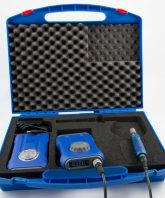
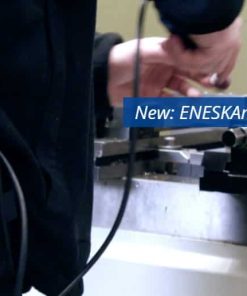







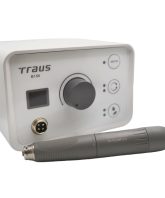
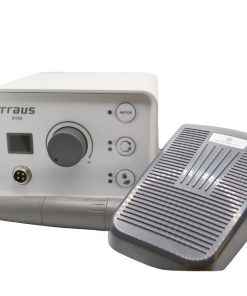





![Carbide Burr - N Shape (Inverted Cone) - on a 3mm Spindle [1200x900]](https://moleroda.com/wp-content/uploads/2016/02/Carbide-Burr-N-Shape-3mm-1200x900-1-165x198.png)

![Carbide Burr - H Shape (Flame) - on a 3mm Spindle [1200x900]](https://moleroda.com/wp-content/uploads/2015/12/Carbide-Burr-H-Shape-3mm-1200x900-1-165x198.png)
![Carbide Burr - J Shape (60 Degree Countersink) - on a 3mm Spindle [1200x900]](https://moleroda.com/wp-content/uploads/2015/12/Carbide-Burr-J-Shape-3mm-1200x900-1-165x198.png)
![Carbide Burr - K Shape (90 Degree Countersink) - on a 3mm Spindle [1200x900]](https://moleroda.com/wp-content/uploads/2015/12/Carbide-Burr-K-Shape-3mm-1200x900-1-165x198.png)
![Carbide Burr - L Shape (Bull Nosed Cone) - on a 3mm Spindle [1200x900]](https://moleroda.com/wp-content/uploads/2015/12/Carbide-Burr-L-Shape-3mm-1200x900-1-165x198.png)


